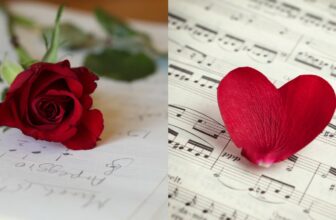What is an Interlude in Music? (Meaning and Purpose)

An interlude is an instrumental passage that connects different parts of the song. Interludes generally do not have a fixed length and some artists may even use interludes to transition from one song to another in an album.
Although there is no singular definition for an “interlude” in music, artists have often used it as a way to transition from one verse to another.
Contents
Interludes In Action
In Blink 182’s song ‘Dammit’, the guitar riff plays through the intro, verses, and even the chorus. But when we hear it in between two verses, the feel is very different. This prevents the song from not sounding monotonous and helps break up the verses nicely. This is an example of a simple instrumental interlude.
Hook As An Interlude
In a song, a ‘hook’ is a short and catchy melody that is repeated throughout. Hooks are often used to transition from one verse to another. In the song ‘Baker Street’ by Gerry Rafferty, the saxophone line hook also doubles as an interlude.
Bridge As An Interlude
Interludes are sometimes also referred to as ‘bridges’. This is because they are used to link one part of the song to another. A bridge generally has a shift in melody and/or tempo and is used once in a song to create a shift in the mood.
In Limp Bizkit’s ‘Break Stuff’, the bridge appears in the middle of the song. The drums decrease in dynamics, giving more room to the vocals and the guitar riff, which is also simplified. This results in a dip in the energy of the song before it kicks back up again.
Outro As An Interlude
Another unique way for interludes to appear in a song is at the very end of it, or in its ‘outro’.
Think of these as hidden tracks that the artist has carefully crafted into a song or an album. These will appear at the very end and can even be preceded by complete silence so the listener is in for a pleasant surprise.
In Nirvana’s ‘Nevermind’, one expects the album to end after ‘Something In The Way’, but after a few seconds of complete silence, a new track ‘Endless, Nameless’ appears.
A Song As An Interlude
As I mentioned earlier, interludes are not just used in a song but they can be used in albums as well. They are generally not full-length songs and are shorter in duration than the rest of the tracks in an album.
In Radiohead’s album ‘OK Computer’, a 1:58 minute track called ‘Fitter Happier’ appears between ‘Karma Police’ and ‘Electioneering’. The track is an automated voice accompanied by a filtered piano.
The placement of the track not only changes the mood of the album but also acts as an interesting transition (intermission) between a slow-tempo song to a high-paced one.
Uses Of Interludes:
- To transition from one part of the song to another.
- To add a climax to a piece of music.
- To change the mood in a song.
- To provide a break in the traditional verse-chorus-verse structure in pop music.
- To introduce change in melody, rhythm, or tempo in a song.
How to Write an Interlude (Tips)
Writing an interlude can be approached many different ways but ultimately, it depends on what kind of song you’re writing and what you hope to achieve. That being said, here are some tips to follow if you want to write a successful interlude:
1. Establish what you want. Before starting, define what kind of interlude you plan on using, a short one to bridge two parts, a break, a change in the song, etc. Also, decide on whether it will appear in different parts of a song or it’s gonna be a repetitive occurrence (eg. before the first chorus, before the second chorus, etc.)
2. Duration. If you have the melody already in place, think about the duration of the interlude and establish how long, or around how long you plan on having it.
3. Experiment. It’s unlikely that you’re first try will result in a good interlude. Experiment with different instruments and ideas to see how you would fit an interlude in certain places and if it serves the song.
4. Add some texture. Sometimes it’s good to add some texture to the interlude in order to avoid having a bland transition. Add some ambiance, harmonies, and different melodies to keep the song catchy.
5. Test and adjust. Make sure the interlude fits the context of the song and don’t be afraid to adjust and refine certain parts. As I said, you’ll unlikely get it the first time around so go over it again and change it if you have to.
During this process, remember that sometimes less is more. You don’t have to overcomplicate things, stray away from complexity. Keep it simple, come up with a short musical interlude, and work from there. Test and refine your work and get feedback if possible before you showcase your work.
Summary
Interludes are a crucial part of songwriting. When used correctly, they can not only connect two radically different thoughts or moods in a musical composition but even on an album as a whole. Artists, especially in genres such as Hip Hop and R’n’B have used different types of interludes as a means to express themselves.
Although the trend of adding interludes in albums (or LP, EP) has been on the decline because of changing listening habits and the overall listening experience, artists such as Tool and Kendrick Lamar continue to challenge the status quo of streaming singles online and invite their listeners to listen to an album in its entirety.





